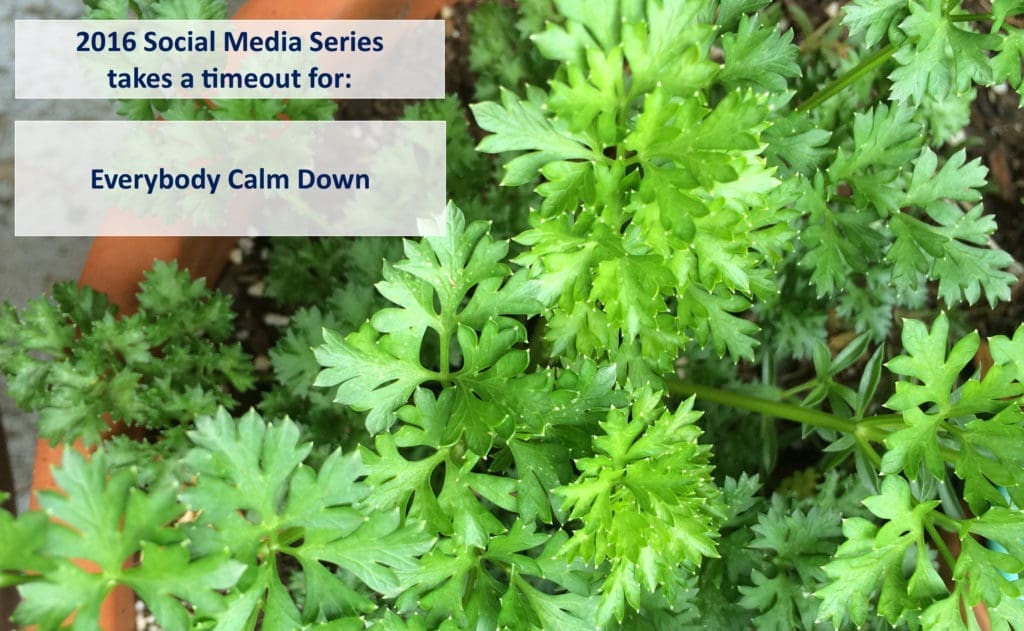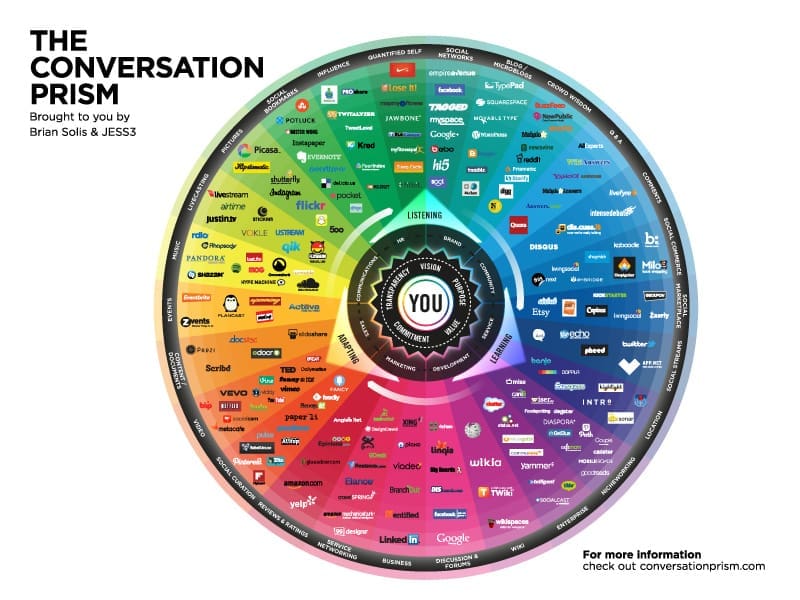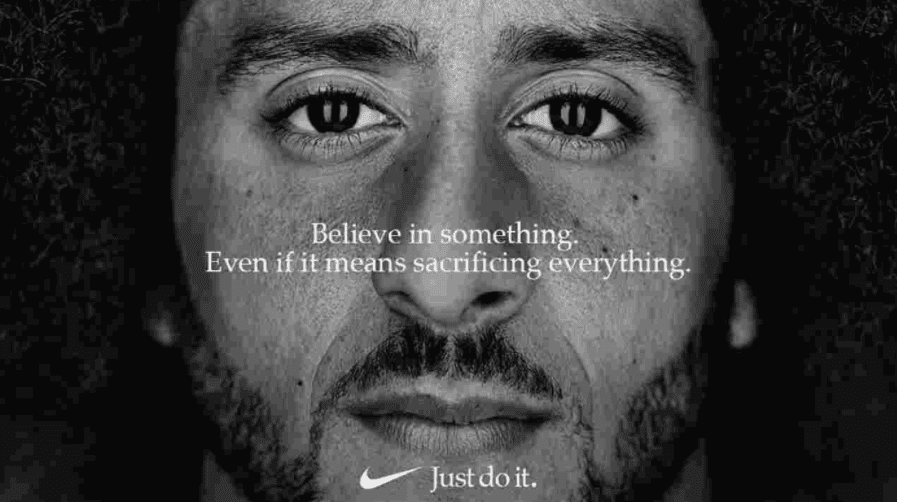Whereas Facebook and LinkedIn each merited their own series of posts, we will now turn our attention to Tumblr, Pinterest, and Instagram. For our purposes as small business owners, local and online merchants, one-man-bands, and other bootstrappers, let’s lump these three together as the “visual platforms,” i.e. the newer, sexier social media.
But, let’s put air quotes around both new and sexy, okay friends?
If you stick around emerging tech long enough, you’ll begin to hear new and sexy as the facile insipid euphemisms they are, cast about by marketers who’ve got more wham than wit.
While we may (or may not) have accepted it yet, we can’t have overlooked that the pace of change is faster than ever. This rapid cycling has a higher effect on our world than ever, with less “down-time” to adapt to changes and new developments.
It’s overwhelming. Someone needs to say it.
(I mean, do you even remember Netscape? Blew your hair back just now, huh?)
We Will Always Have New. Emerging. Disruptive. Tech.
Blah, blah, blah. It doesn’t matter whether you were born before color televisions made it into every home on the block. Or before cordless phones did. Before smart phones or smart appliances.
Across the board, this hastening pace of progress shouldn’t be a surprise to any of us.
It’s like a city bus. There will be another new whiz-bang announcement along in about ten minutes. You can’t catch them all.
It’s a marathon, not a sprint. And, I’m tired, guys.
I can’t get all worked up and worried about every new “next-best-thing” — be it Plancast or Periscope, Meerkat or Medium, Scoop.it or Squidoo.
And, if I get another Branded.me request from somebody I’m already connected to on LinkedIn and Twitter and Facebook…
I. Just. Can’t. Even.
I’m sure somebody has already graphed the rise of photo and video sharing platforms / apps against the rise of smartphone adoption.
This ride ain’t slowing down. Just you wait until the Internet of Things (IoT) starts to become ubiquitous. We’ll have a whole new batch of content marketing opportunities to either A) ignore, B) get overwrought with, or C) approach circumspectly based on other people’s experiments and best practices. And, D) attend their launch parties at SXSW where we will enjoy our free themed cocktails and take home enough branded swag to outfit a small village.
Find social media platform(s) you and your audience like. Build there.
For example, I don’t know a single soul who still uses Typepad, except that one guy, Seth Godin. You may have heard of him. If not, maybe you should have.
Build a deep loamy content-rich resource, oriented to the sun, irrigated well, weeded regularly, and it will produce for you. Or you could scatter your seeds upon the winds and say, “Here’s hoping for a beanstalk.”
A Brief History of Social Media Before “Visual Platforms”
This famous infographic from Brian Solis and JESS3 is EIGHT years old. If it were a person, it’d be in third grade, folks. ~shudders~
Why are we looking at the social media landscape from soooo long ago?
Because it’s pretty? Well, yah.
Because you can’t know where you’re going if you don’t know where you’ve — oh, never mind. It’s because I’m pedantic like that.
Now, dig this: Tumblr is on the prism. (They started in February 2007.)
The other two aren’t. They didn’t really get going until 2010. At that time, all three represented departures from extant offerings available to the common user of existing platforms, like Facebook, LinkedIn, and Twitter. (I know Facebook has always allowed photos, but not with the same facility and utility for users as it does today.)
In the same way that some political candidates are thought to push establishment campaigns in a certain direction, this cohort of late ’00s-early ’10s’ visual platforms pushed (and upon buyout in some cases, enabled) establishment platforms to develop an even more visual user experience.
Holy Toledo! I just called Facebook part of the “establishment.”
For instance, Twitter didn’t roll out photo sharing until 2011. Before that, you had to do a little soft-shoe with third-party apps and short-link hosting sites.
Vine came out in 2012 and was acquired by Twitter within months to add video capacity. While Vine still exists as a separate business unit with dedicated users and fan base, Twitter began to offer native video recording and posting in 2015. Yoree Koh at The Wall Street Journal takes a much closer look at who did what when, particularly around Twitter and video.
My intent isn’t to chronicle the natural selection and evolution of the social media landscape. I’ve lived it. I’ve slept since then. I expect to live a good long time in this brave new world and, frankly, I’m conserving energy for the changes which will truly require attention.
Rather, my intent is to give you enough background so that you can make an informed decision about which social media platforms might be of best benefit to you, why, and how. We’ll dive deeper into these three visual media social platforms in the next post.
Suzanne Hoenig
Latest posts by Suzanne Hoenig (see all)
- The Anti-Social-Media-Marketing Manifesto 2016 - October 19, 2016
- Which 3 Social Media Platforms Will Be Around in 3 Years? - October 13, 2016
- White Papers: Still a Way to Compel and Convert Leads - September 14, 2016






